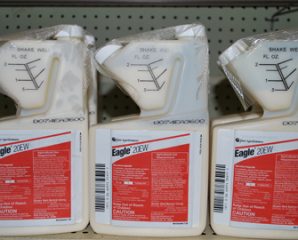As you are all well aware this spring has been a challenge with the cool damp weather. Chances are that even when things finally warm up, it’s still going to be damp, where by plant foliage doesn’t dry out and the roots stay far to wet. Under these conditions, vital oxygen doesn’t come in contact with the roots, allowing Black Root Rot (Thielaviopsis sp.) and water molds (ie. Phytophthora sp.) to invade the roots. Soil amendments will improve drainage and thus, allow oxygen in, which goes a long way to curtail the onset of root rotting issues. You can apply soil drenches with various fungicides if you get the pathogen properly identified, but this usually works best in concert with proper planting practices .
More visible are the symptoms of foliar diseases, many of which start infecting leaves at bud break or just as leaves start to unfold. In this case several foliar sprays may be in order on ornamental trees and shrubs. New lawn seedings along with established lawns can also greatly benefit from fungicides during periods of wet weather.
Of even more concern are the losses that could be sustained to susceptible annuals and perennials planted this spring. A judicious preventative application of fungicide along with sound cultural practices can prevent losses of material, time and labor – and most of all disappointed customers.
As always stop in or call with any questions!

